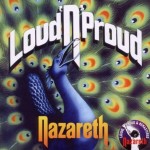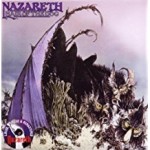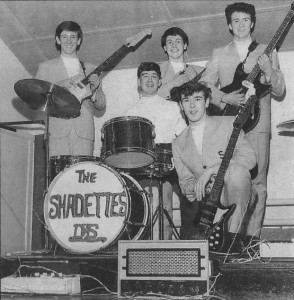The Nazareth Story
Trailblazers for 1980s Scottish acts like Big Country, Wet Wet Wet, Del Amitri, Deacon Blue, and Texas? Very likely so. Heroes and inspiration for Guns N’ Roses? Most definitely. But the Nazareth story isn’t just another from-rags-to-unheard-of-riches tale of making it in rock‘n’roll.
In the early 1960s there were many fledgling Scottish bands struggling to create a unique sound of their own, but a major factor holding them back was their remoteness from the main hub of the UK music business in London , this was the place you had to be, but frankly nobody was interested in what was happening north of Watford, let alone in Scotland.
Matters were made even worse by Scottish promoters and ballroom managers who insisted that Scottish groups limit their set-list strictly to covers of singles in the UK Top Thirty. In other words, performers like Agnew, Charlton, singer and front man Dan McCafferty and drummer Darrell Sweet were excluded by ‘the machine in London’ yet were trapped into mimicking its often dire output as well.
So, yes, it did really happen that soon-to-be hard rockers Naz were forced – in their original incarnation as the Shadettes – to perform tongue-in-cheek versions of ‘Simple Simon Says’ if they wanted to get paid after the gig.
It was enough to make this group of angry young musos from Dunfermline tell the Brylcreemed Locarno ballroom brigade to stuff it – so instead they went out and conquered the world. What follows is the story – mostly told by Pete Agnew and Dan McCafferty, possibly in greater detail than ever before – of how Nazareth did just that. But first here are some Naz facts to set the scene.
Pete formed the original Shadettes in 1961 and was Lead vocalist and rythm guitarist. Darrell joined in 1963 replacing originaldrummer, AlanFraser.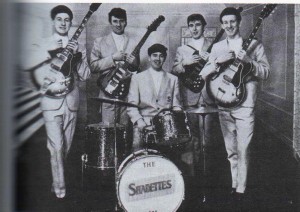
Dan joined in 1965 after Des Haldane (who had joined at the same time as Darrel) left the band.By this time Pete and Des (both rythm guitarists) had started to develop a dual vocal approach to a lot of the band’s material and having Dan join, the band would continue in this vein. A keyboard player (John Hearn) was added soon after and around this time Pete stopped playing guitar and The Shadettes became the first group in Scotland to feature two (male) lead vocalists. Pete said “This worked great because at that time, soul music had hit Scotland in a big way and we found ourselves with the perfect line-up to cover songs by the likes of Sam & Dave ; Bob & Earl ; The Temptations etc.” Manny joined in 1968 replacing original lead guitarist, Brian ‘Pye’Brady.
In 1969 Pete took over from original Alf Murray as bass player. As Pete said later, “Alf was a great guy but was continuously missing rehearsals and turning up late to our gigs. I would find myself playing bass for the first 20 minutes of the gig every other night until he (Alf) arrived so when he was fired it was decided that I should take over as bass player, although I must admit I wasn’t exactly thrilled about the prospect at the time.” At the beginning of 1970, John (the keyboard player) went the same route as Alf for the self same reasons and so now the band were the 4 piece (Dan, Pete, Manny & Darrell) that would become known as Nazareth later that year. The band now thought they needed a name change, as the name,’ Shadettes’ seemed dated and kind of ‘lightweight’ for the times so while sitting discussing this in the bar of a local hotel, the song ‘The Weight’ by The Band started playing on the bar’s sound system. The first line of the song goes ‘I pulled into Nazareth, feelin’ ’bout half past dead’. Pete then said “How about Nazareth?” Nobody disagreed, and the rest, as they say, is history.
Several things marked these guys out as a bit different: first, they were married and settled before they decided to take the plunge in the summer of 1971 , and quitting good day-jobs then moving away from home to a grotty communal flat in London;
second, they grew up and lived in a conservative-attitudes Scottish town, not a bustling fashion-conscious metropolis like Glasgow. Lastly, in bingo millionaire Bill Fehilly, they had what no other struggling Scottish band had at the time – solid financial backing.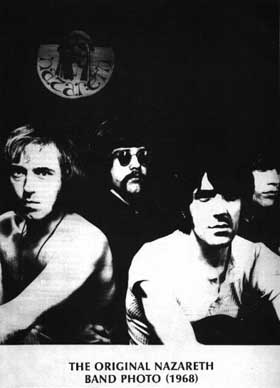
So being husbands and fathers meant that once they turned pro they were very focused about what they were going to do – they had to be. Dan McCafferty said something which says a lot about Dunfermline in the early-1970s: once the band had made it, their image – long corkscrew hair, loud flares, and platform boots – did not always sit that comfortably with the folks back home.
Dan now fondly remembers returning from yet another gruelling tour and, ever the dutiful husband, offering to accompany his wife to the supermarket to do the shopping: ‘Not dressed like that you won’t!’ or some such jokey comment was her reply.
Dress codes on stage were also an issue back in the 1960s. The Shadettes got no hassle from ballroom managers when they were all kitted out in bright yellow suits – regulation show-biz uniforms were fine. But as the progressive rock thing took off in the late-1960s and musicians dressed more to express individuality, some ballroom heavies didn’t like it at all: for instance, the thought of someone trying to stop Pete Agnew going on stage because the manager didn’t approve of his buckskin jacket seems crazy now but it did happen because that was how things were back then , and in the very early Nazareth days when Naz’s glitter jacket, proto-heavy metal image earned them some scary – even life-threatening – crowd disapproval, like when they supported the seriously dressed-down Rory Gallagher on his late-1972 European tour.
Yet, weirdly, all those Shadettes apprentice years as a pop-covers band in Dunfermline’s Belleville Hotel and Kinema Ballroom played a big part in Nazareth eventually finding their own formula for international success. How? Well, each and every week without fail during their Belleville Hotel residency they had to learn three new hits from the charts – they’d rehearse them on a Sunday afternoon and perform them that same night. Now how many semi-pro bands these days could cope with nailing down that amount of new repertoire in just a couple of hours, week-in week-out?
But maybe that was how Dan, Pete, Manny and Darrell developed the knack of stamping their very own identity on somebody else’s hit song, something which, for Nazareth in the mid-1970s, proved to be the key to the world highway.
The band’s extensive gig schedule brought them to the attention of Pegasus Records, who released the bands debut album in late 1971.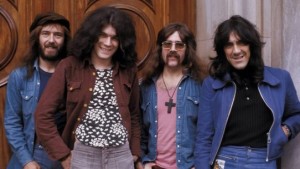
The Album was warmly received by the critics, it also had two singles taken from it ‘Dear John’ and ‘Morning Dew’ a brilliant song written by the lovely Bonnie Dobson (Canadian) although the American, Tim Rose is now well known to have stolen the writing credit and to Nazareth’s disgust continues to be credited on sleeve notes for their own recording of the song
‘Dear John’ made the top three in France whilst Morning Dew (although it never had a chance of being a hit single at 7 minutes long) became an instant cult hit in Germany – and this was enough to provide the band with a hectic European touring schedule throughout 1972.
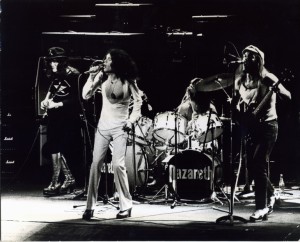 In America Warner Brothers picked up on ‘Morning Dew’ and its potential given that the song was written by respected American artist Tim Rose. But sales were poor and at the time Pete Agnew had a sneaking suspicion that this might have been something to do with some hatchet work done by Warners whose good intention was to make the single more radio-friendly: Pete: “It was a seven minute track and they cut it to three. I think Warner Brothers had someone editing for them who we thought must have been a deaf mute – they must have run the tape past him and at three-and-a- half second intervals he would hit it with an axe.”
In America Warner Brothers picked up on ‘Morning Dew’ and its potential given that the song was written by respected American artist Tim Rose. But sales were poor and at the time Pete Agnew had a sneaking suspicion that this might have been something to do with some hatchet work done by Warners whose good intention was to make the single more radio-friendly: Pete: “It was a seven minute track and they cut it to three. I think Warner Brothers had someone editing for them who we thought must have been a deaf mute – they must have run the tape past him and at three-and-a- half second intervals he would hit it with an axe.”
The following year’s ‘Exercises’ album, was Produced by Roy Thomas Baker (who would later work with Queen, Alice Cooper and Foreigner among many others) saw the band taking on a very different approach of a more folky sound, but more than three decades later, Pete and Dan agree that it sounds lightweight and directionless.









